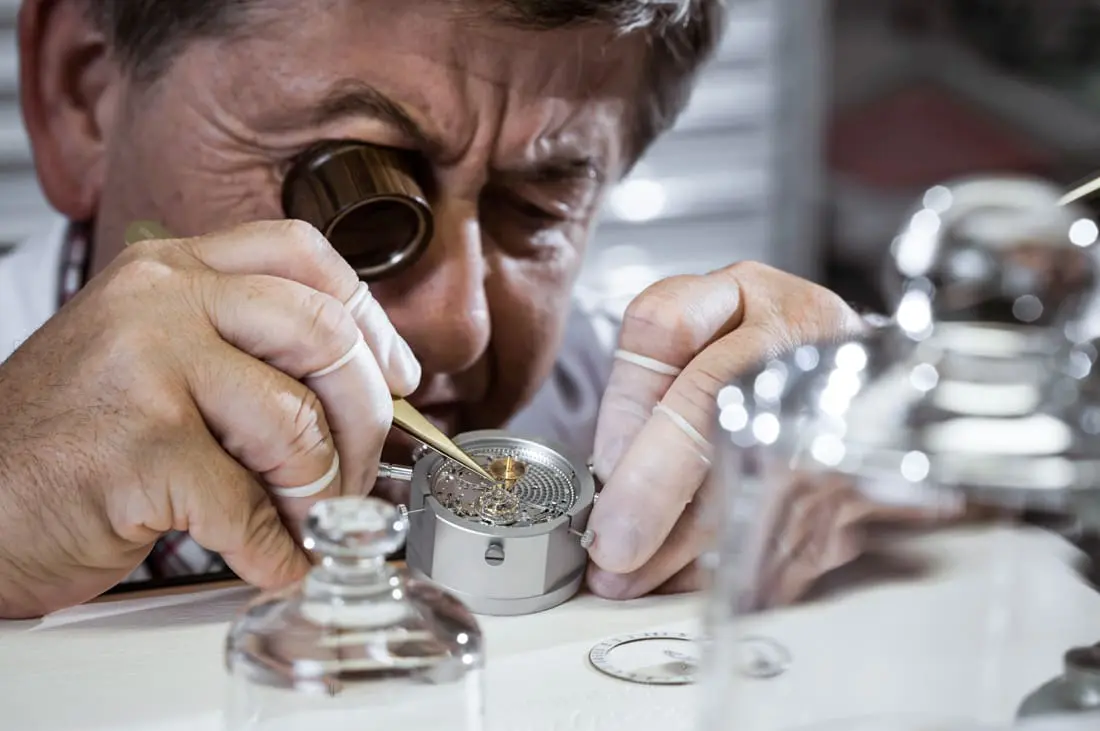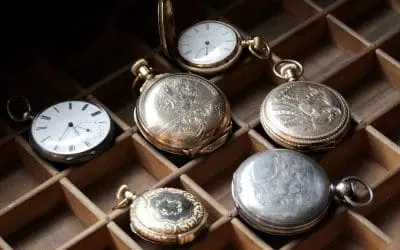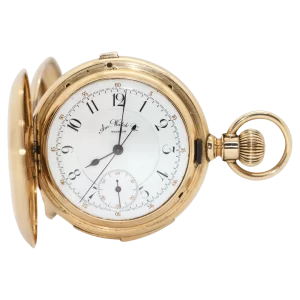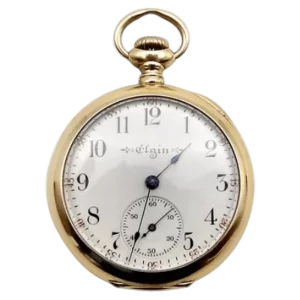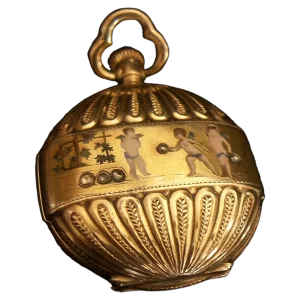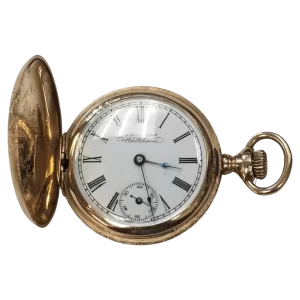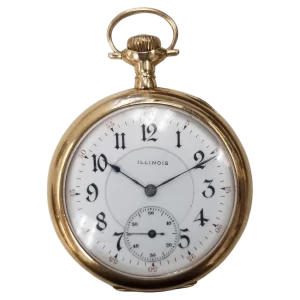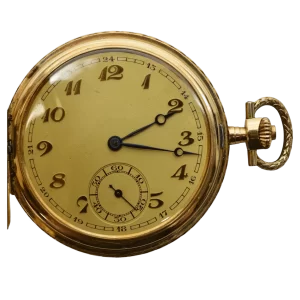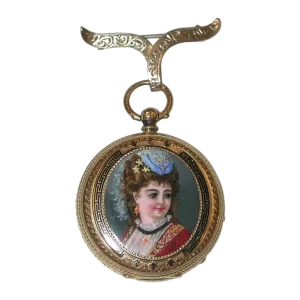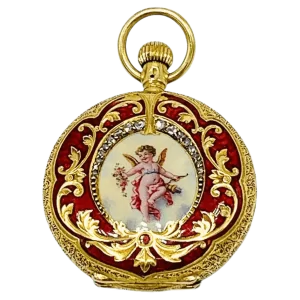古董怀表具有永恒的魅力,吸引了手表收藏家和爱好者的目光。 凭借复杂的设计和精湛的工艺,这些时计曾经是地位和财富的象征。 如今,它们代表了一段可以通过修复艺术保存的历史。 对于古董怀表的拥有者和制表师来说,让古董怀表复活是一个令人着迷且有益的过程。 在这篇博文中,我们将探索古董怀表的世界以及修复对于保持其价值和美丽的重要性。
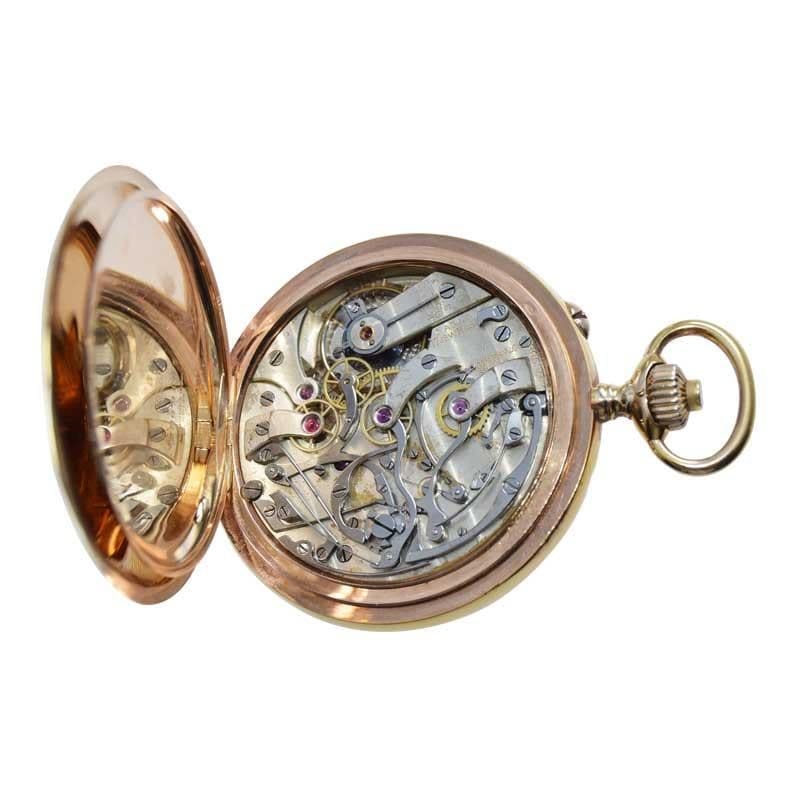
古董怀表的迷人世界
古董怀表有着悠久的历史,深受收藏家的高度重视。 在腕表流行之前,这些时计是计时的主要方式。 古董怀表通常具有复杂的设计、精密的工艺以及金或银等优质材料。 它们曾经是地位和财富的象征,经常作为传家宝在家庭中传承。
古董怀表的款式、材质和标记通常可以帮助识别其年代和起源。 例如,18 世纪的怀表可能有精美的雕刻和陶瓷表盘,而 19 世纪的怀表可能配有华丽的金或银表壳。
古董怀表可以告诉我们很多关于制表业的历史,从计时技术的演变到不断变化的时尚潮流和文化影响。 由于其耐用性、稀有性和独特魅力,它们至今仍深受收藏家和手表爱好者的欢迎。
了解修复对于保存古董怀表的重要性
古董怀表对其拥有者来说具有巨大的历史和情感价值。 它们是过去时代的独创性和工艺的证明。 不幸的是,随着时间的推移,怀表可能会因自然磨损、损坏或疏忽而老化。 这就是修复在保存古董怀表方面发挥着至关重要作用的地方。
修复可以让古董怀表恢复昔日的辉煌
修复涉及一系列过程,旨在使古董怀表恢复其原始状态。 这可能包括修理或更换损坏的零件、清洁内部结构以及抛光或重新电镀外部以恢复其光泽。
修复可以防止古董怀表进一步恶化
古董怀表是精致的仪器,需要适当的保养和维护才能正常工作。 修复可以解决可能导致进一步损坏的问题,例如生锈、腐蚀或部件错位。 专业制表师可以在修复过程中诊断并解决这些问题,从而延长古董怀表的使用寿命。
修复可以增加古董怀表的价值
经过修复的古董怀表可以显着增加其价值,特别是如果修复正确的话。 修复后的手表对收藏家来说更有吸引力,正确的修复过程可以保留收藏家和爱好者所寻求的真实性。
修复工作应由具有古董手表专业知识的专业制表师完成
修复是一个复杂而微妙的过程,只能由具有古董手表工作经验的专业制表师来执行。 专业制表师拥有必要的工具和知识,可以安全准确地进行修复,而不会损坏古董怀表。
修复可能包括根据需要进行清洁、修理和更换零件
不同怀表的修复过程可能有所不同,具体取决于每件古董的状况和要求。 修复可能包括清洁怀表的内部和外部、分析机芯和机械装置、修复损坏或磨损的零件,或者在必要时用真正的古董零件更换缺失的零件。
总的来说,修复是保存古董怀表历史和遗产的重要过程。 它不仅赋予古董怀表新的生命,而且还可以使它们对收藏家更具吸引力和价值。 如果您拥有需要修复的古董怀表,请毫不犹豫地联系拥有修复古董怀表专业知识的专业制表师,以帮助其恢复昔日的辉煌。

专业制表师使用的修复技术
专业制表师使用各种技术使古董怀表恢复昔日的辉煌。 这些技术通常需要专门的工具以及对制表工艺和所修复的特定时计的广泛了解。
使用车床制造替换零件
专业制表师使用的一项技术是使用车床制造替换零件。 这需要仔细的测量和精确度,因为新部件需要无缝地融入现有的手表中。 车床为新零件创造出完美的形状,然后将其安装到手表上。
抛光
抛光是另一种常见的修复技术。 随着时间的推移,旧怀表会积聚污垢、污垢和划痕,这会导致难以读取时间并有损手表的整体外观。 专业制表师可以仔细抛光手表表面,去除这些瑕疵,恢复手表原有的光泽。
重新电镀和重新上釉
一些古董怀表可能由于磨损或老化而失去镀层或珐琅。 在这些情况下,修复可能涉及对手表进行重新电镀或重新上釉。 这项技术可以恢复手表的原始外观并防止进一步恶化。
拆卸和重新组装
修复通常涉及将手表拆卸成各个部件以进行维修或清洁。 专业制表师拥有必要的知识和专业知识,可以仔细拆卸和重新组装手表,同时最大限度地减少损坏或错误的风险。
广泛的维修工作
一些古董怀表可能需要大量维修才能完全恢复。 这可能包括更换损坏或磨损的零件或修复手表机械装置或外壳的损坏。 专业制表师可以精准、细心地进行这些维修,确保腕表尽可能恢复到原来的状态。
为修复项目采购古董零件
找到合适的古董零件对于古董怀表修复项目的成功至关重要。 以下是采购古董零件的一些提示:
- 请咨询制表师协会或古董手表经销商,了解古董零件。
- 如果您找不到所需的零件,请考虑定制它以适合您特定的古董怀表。
- 一定要使用正宗的古董零件,以保持修复后的手表的价值。
- 经验丰富的制表师可能与古董零件供应商和资源有联系。
修复古董怀表可能是一项充满挑战但有益的经历。 凭借正确的工具、技术和古董零件,专业制表师可以使古董怀表恢复原来的辉煌,并增加其对收藏家的价值。
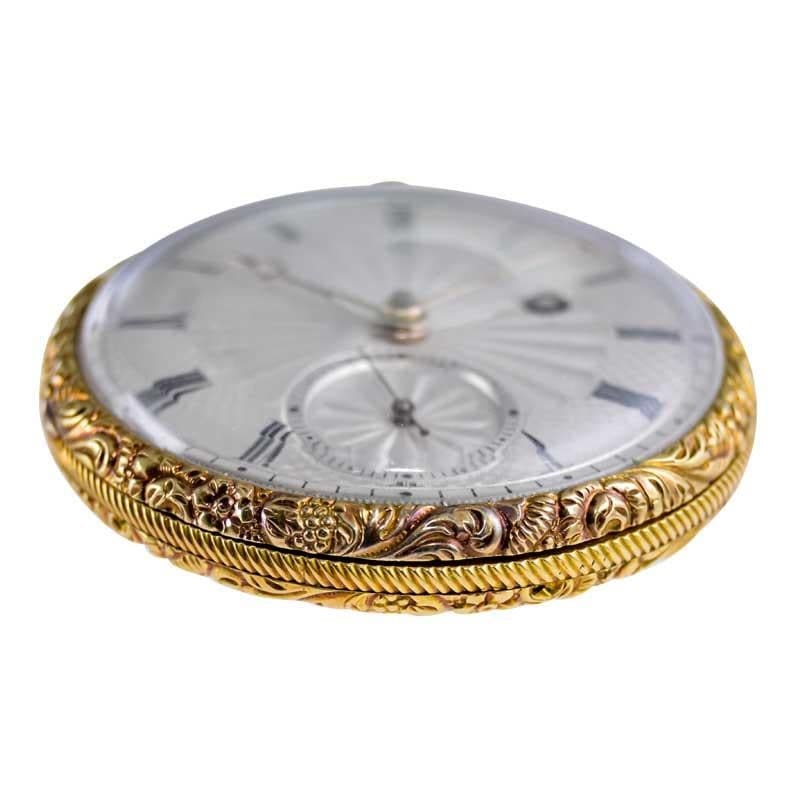
保养修复后的古董怀表:提示和维护
在投入时间和资源修复古董怀表后,妥善保养它以确保其使用寿命非常重要。 以下是维护修复后的古董怀表的一些技巧:
小心轻放
古董怀表很脆弱,如果处理不当很容易损坏。 处理修复后的古董怀表时,请注意握住它的方式并避免掉落。
定期保养
定期维护是保持修复后的古董怀表功能的关键。 请专业制表师定期对您的腕表进行保养。 清洁和上油对于保持手表处于最佳状态也至关重要。 但是,使用清洁溶液时要小心,因为有些清洁溶液可能会损坏手表的精密部件。
贮存
正确存放古董怀表对于保持其状态也很重要。 不使用时,将其存放在保护盒或袋子中。 避免将其暴露在极端温度或潮湿环境中,否则可能导致生锈、腐蚀或其他损坏。
绕线
为古董怀表上弦时,请注意不要上弦过度。 过度上链可能会导致手表内部组件损坏。 慢慢地给手表上弦,一旦感到阻力就停止,以免过度上弦。
专家帮助
如果您发现修复后的古董怀表有任何问题,请向专业制表师寻求帮助。 尝试自行解决问题可能会导致进一步的损害。
通过遵循这些提示,您可以确保修复后的古董怀表在未来几年内保持最佳状态。
结论
修复古董怀表是一个令人着迷且有益的过程,需要高超的技能和专业知识。 古董怀表有着丰富的历史,因其独特的设计、工艺和历史意义而受到收藏家的重视。 修复对于保存这些时计非常重要,并且可以增加其价值。 通过适当的保养和维护,修复后的古董怀表可以供子孙后代使用。 如果您有需要修复的古董怀表,请务必寻找经验丰富且技术精湛的专门从事古董手表的制表师,以确保获得最佳效果。

